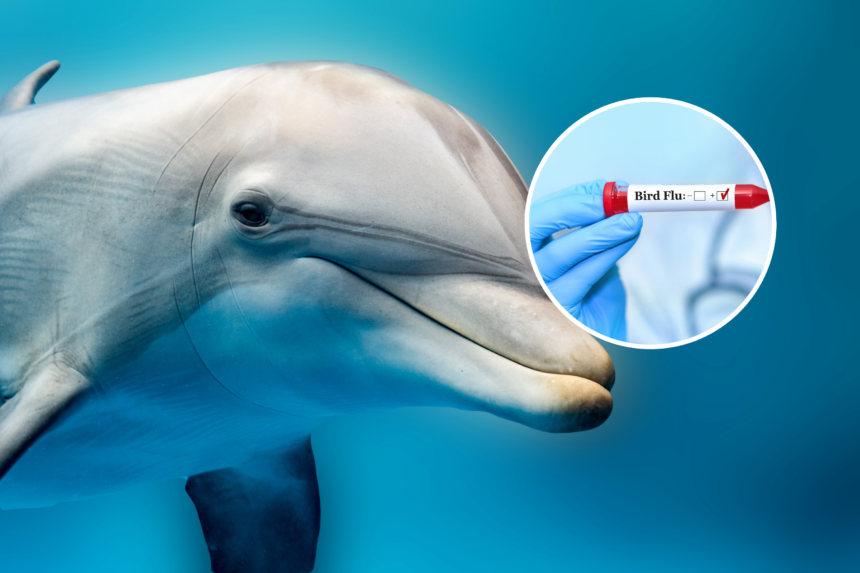A Florida dolphin was discovered with “highly pathogenic” bird flu, according to a study.
This dolphin was the first cetacean ever recorded with the highly pathogenic avian influenza virus, also known as HPAIV, in North America. This discovery, which was made by University of Florida researchers, is detailed in a paper in the online journal Communications Biology.
The study examined the first U.S. finding of HPAIV in a cetacean, from when it was first detected by marine rescue teams to the diagnosis of the virus and the samples found in a postmortem exam. Scientists fear that a spread of bird flu “could be catastrophic” for cetaceans, the study said.
This dolphin was first found “in distress” in March 2022 after it became stuck in a Dixie County canal. Attempts were made to rescue the animal, but it died shortly after a rescue team arrived. It was packed in ice and transported to the University of Florida.
At this point, scientists did not suspect bird flu, but the postmortem showed many severe health problems, including inflammation of the brain and leptomeninges disease.

Andrea Izzotti / SyhinStas/Getty
Upon further analysis, they discovered symptoms similar to those in other Florida wildlife that had been infected with the virus. Birds found with the flu also had brain inflammation, the study said.
The researchers also said that in 2022 there had also been harbor seals and gray seals dying from the virus. A small amount of those that died also had neurological symptoms.
The virus was first detected in North America in 2021, and since then it has been spreading across birds and other mammals. Therefore, scientists knew there was a possibility of “spillover” into other marine species such as dolphins.
Eventually, after various tests, they detected the isolated virus in the dolphin’s brain tissue. However, it’s not known how the dolphin may have contracted the flu.
“We still don’t know where the dolphin got the virus and more research needs to be done,” said Richard Webby, director of the World Health Organization Collaborating Center for Studies on the Ecology of Influenza in Animals and Birds at St. Jude Children’s Research Hospital, in a statement.
A global outbreak of bird flu started in 2020. Although this virus isn’t very dangerous to humans, it has caused millions of deaths in birds and other wildlife. Seals and sea lions have been the main mammals affected by the disease so far.
In the U.S., the disease has been particularly widespread in marine mammals in Maine. It has also been detected in seals in Puget Sound, Washington state. It has been spreading particularly quickly in South America.
It is important to understand more about the virus so scientists can potentially prevent it from spreading to other animals.
“This investigation was an important step in understanding this virus and is a great example where happenstance joins with curiosity, having to answer the ‘why’ and then seeing how the multiple groups and expertise took this to a fantastic representation of collaborative excellence,” Mike Walsh, an associate professor of aquatic animal health at the University of Florida, said in a summary of the study.
Do you have a tip on a science story that Newsweek should be covering? Do you have a question about bird flu? Let us know via science@newsweek.com.
Uncommon Knowledge
Newsweek is committed to challenging conventional wisdom and finding connections in the search for common ground.
Newsweek is committed to challenging conventional wisdom and finding connections in the search for common ground.

